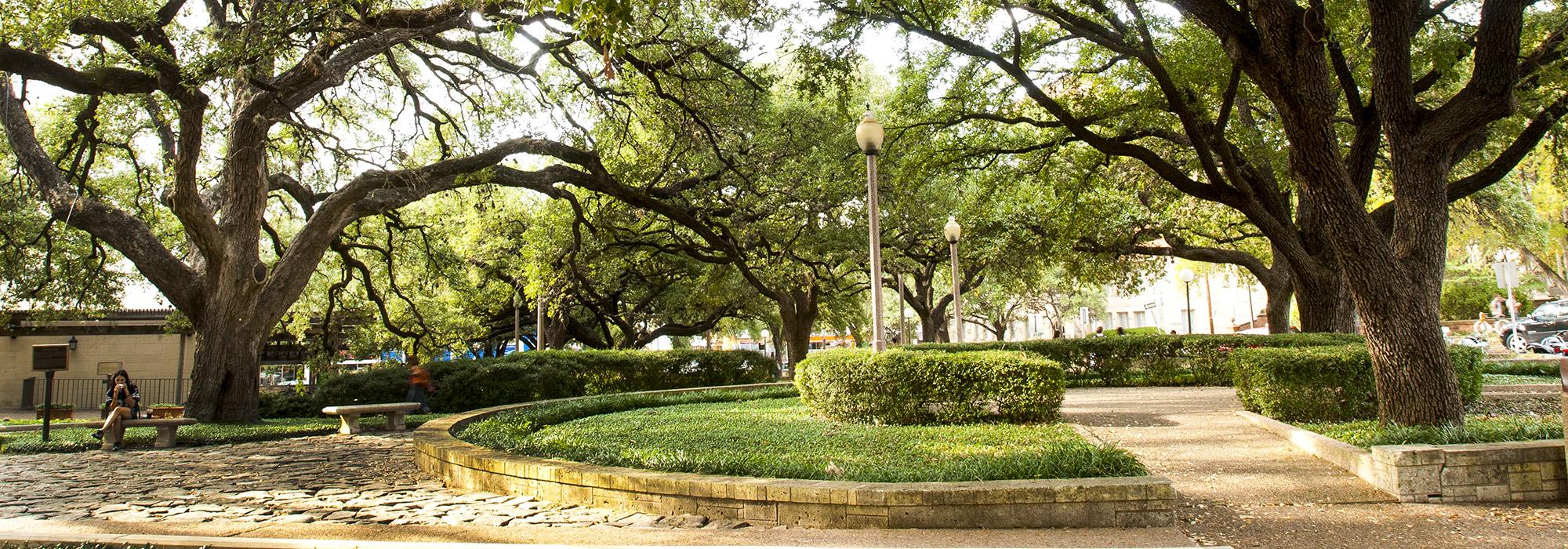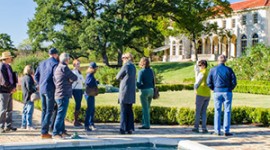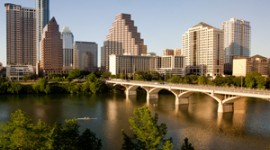Landscape Information
Established in 1883 on the 40-acre “College Hill” set aside for the campus in 1839, this campus was largely laid out by architects Paul Cret and Cass Gilbert with landscape architects Hare & Hare between 1909 and 1945. Atop a ridgeline, the core of the campus (today some 430 acres) is anchored by Cret’s Main Building—with its 307-foot tower—completed in 1937 on axis with the Texas State Capitol. The campus is defined by its topography—with hills providing panoramic views and a sense of enclosure—and the presence of Waller Creek, which bisects the campus, with the historic section to the west and the late twentieth century section to the east. Overlaid on this, the grid-like configuration of streets and buildings create both symmetrically organized, intimately scaled plazas and courtyards as well as larger, more spacious parklands composed of undulating open spaces, clusters of mature canopy trees, and sculptural displays.
Geometric forms reinforce the Beaux-Arts composition, such as the rectilinear lawn of the South Mall framed by live oak and anchored by the Littlefield Fountain, executed by sculptor Pompeo Coppini in 1932 to memorialize alumni who died in World War I. Nearby, the West Mall is planted with tulip magnolia and sabal palms while the East Mall provides the setting for a statue of Martin Luther King, Jr. Beyond, the Lyndon Baines Johnson Presidential Library and Museum’s Brutalist architecture by Skidmore, Owings & Merrill forms a stark contrast with its open, elliptical lawn and pastoral surrounds. In 2014 Sasaki Associates prepared a master plan to provide guidance for campus improvements and stewardship.















